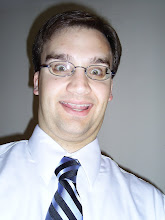Brother Cesare Bonizzi, also known as Frate Cesare and Fratello Metallo ("Brother Metal") - which was also the name of his band, is a Capuchin friar belonging to the Order of Friars Minor Capuchin, who was known as a heavy metal singer.
Bonizzi was born in 1946 in Offanengo, Italy. He entered a monastery in 1975, and subsequently carried out missionary work in the Ivory Coast. After returning to Italy he was ordained a priest in 1983. Since 1990 he has been interested in using music as a means of contemplation and spiritual devotion, and he has released numerous albums in various styles from new age to rock. After seeing Metallica in concert, however, he became passionate about heavy metal as a musical vehicle. According to him, "Metal is the most energetic, vital, deep and true musical language that I know." He currently lives in the convent of Musocco, a district of Milan. In late 2009, he announced that he would no longer perform.
Although his full transformation to heavy metal is only found on Fratello Metallo's 2008 release Misteri, Bonizzi has recorded numerous albums in various musical genres. He cites Megadeth and Metallica as major inspirations on his transformation to metal. With his new style of music, which he calls "Metrock" as a combination of metal and rock, he was the opening act at 2008's Gods of Metal, Italy's largest heavy metal festival.
Bonizzi performed in full Franciscan habit. Although he was frequently mistaken as making the sign of the horns in concert, he actually extended his thumb along with the index and pinkie, which is the handsign for "I love you" in the American Sign Language.
From: http://en.wikipedia.org/wiki/Cesare_Bonizzi
Bonizzi was born in 1946 in Offanengo, Italy. He entered a monastery in 1975, and subsequently carried out missionary work in the Ivory Coast. After returning to Italy he was ordained a priest in 1983. Since 1990 he has been interested in using music as a means of contemplation and spiritual devotion, and he has released numerous albums in various styles from new age to rock. After seeing Metallica in concert, however, he became passionate about heavy metal as a musical vehicle. According to him, "Metal is the most energetic, vital, deep and true musical language that I know." He currently lives in the convent of Musocco, a district of Milan. In late 2009, he announced that he would no longer perform.
Although his full transformation to heavy metal is only found on Fratello Metallo's 2008 release Misteri, Bonizzi has recorded numerous albums in various musical genres. He cites Megadeth and Metallica as major inspirations on his transformation to metal. With his new style of music, which he calls "Metrock" as a combination of metal and rock, he was the opening act at 2008's Gods of Metal, Italy's largest heavy metal festival.
Bonizzi performed in full Franciscan habit. Although he was frequently mistaken as making the sign of the horns in concert, he actually extended his thumb along with the index and pinkie, which is the handsign for "I love you" in the American Sign Language.
From: http://en.wikipedia.org/wiki/Cesare_Bonizzi








